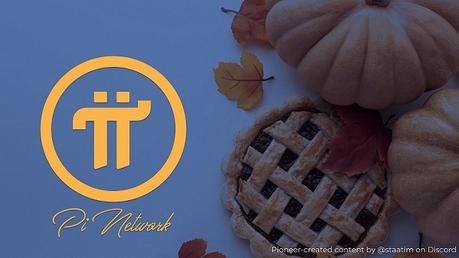
This is the very first published post for this blog so I think we start by simplifying what the Pi Network really is about. You may probably have already read several write-ups defining Pi Network but if it is the very first time that you'll learn about Pi Network from this blog, here's my take on what Pi Network is about.
What is Pi Network?
Pi Network was conceptualized and now being transpired by a group of like-minded Stanford PhD graduates whom we are calling the Core Team. Originally, the core team was composed of three heads namely,
- Dr. Nicolas Kokkalis - Head of Technology
- Dr. Chengdiao Fan - Head of Product
- Vincent McPhillip - former Head of Community.
According to Pi Network website, in verbatim:
Pi is a new cryptocurrency for and by everyday people that you can “mine” (or earn) from your phone. Cryptocurrencies are new form of digital money that are maintained and secured by a community, instead of by governments or banks. Today, you can mine (or earn) Pi by helping to secure the currency and by growing Pi’s trusted network. While most cryptocurrencies (like Bitcoin) have been very hard for everyday people to use and access, Pi puts the power of cryptocurrency into the palm of your hand.
This app allows you to earn Pi coins by making simple contributions to Pi’s community. The more you contribute, the more Pi you earn.
To start earning Pi, check in every 24 hours and hit the lightning button to start mining. Once you are mining, you can boost your hourly rate by inviting trusted friends and family to join the community. After 3 days of mining, you can boost your earnings more by building your security circle, which contributes to the overall security of the network. Keep in mind, earlier members of the network mine at a higher rate than those that come after them.
"As the world becomes increasingly digital, cryptocurrency is a next natural step in the evolution of money. Pi is the first digital currency for every day people, representing a major step forward in the adoption of crypto currency worldwide." - Pi Network Whitepaper; Draft 1 on March 14,2019
In a nutshell, Pi Network is the first decentralized network, built in trust, to use mobile phones as a way of mining cryptocurrency. Unlike Bitcoin which uses the traditional Proof of Work method of mining coins, Pi Network's revolutionary way of mining has always been the subject of controversies from its critics. In order to mine coins from the network, you need to fill a role or two [Read: Your Role in Pi Network] necessary to get rewarded with newly minted Pi on a daily basis.
Many naysayers label Pi Network as a scam because you need to invite people in order to get higher mining rate; without an invitation code from an existing Pi miner, one cannot go through the sign-up process to create a new account. It is clear that high mining rate equates to potential bigger amounts of mined Pi coins. Because of the referral system, critics accuse Pi Network of setting up Multi-Level-Marketing (MLM) and pyramiding styles of networking. I personally disagree with the MLM and pyramiding accusations because the referrer only gets incentives from the first level direct referrals, and will not get any incentives from the referrals of his direct referrals. This means that the early members doesn't always have an advantage over the later members who just joined the network. Having that said, I am also open and accepting to the fact that Pi Network use word-of-mouth as a way of bringing in new members to the network which is not a bad thing because it is a proven and cheap way of advertising and to tell you honestly, it just really works! Within just two years since the core team established Pi network in 2019, the number of members reached more or less 30 Million engaged Pioneers!
This is just a very short introduction to Pi Network and I will be writing separate posts regarding the Core Team, Roles (i.e. Pioneer, Contributor, Ambassador, Node), Security Graph and Security Circles, Utilities, The Open and Enclosed Mainnet, KYC process and so many other topics that need to be addressed before and after the launching of the Open Mainnet.
Thank you for reading Your Piece of Pi Network #YPOPNET Blog's very first post [i personally call this first post as my Genesis Blog post, kind of similar to Pi Network's first block called the Genesis Block]!

